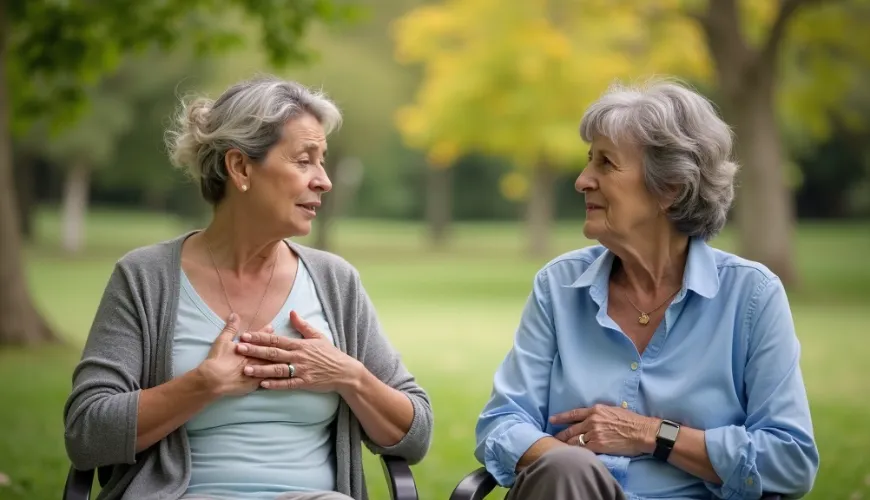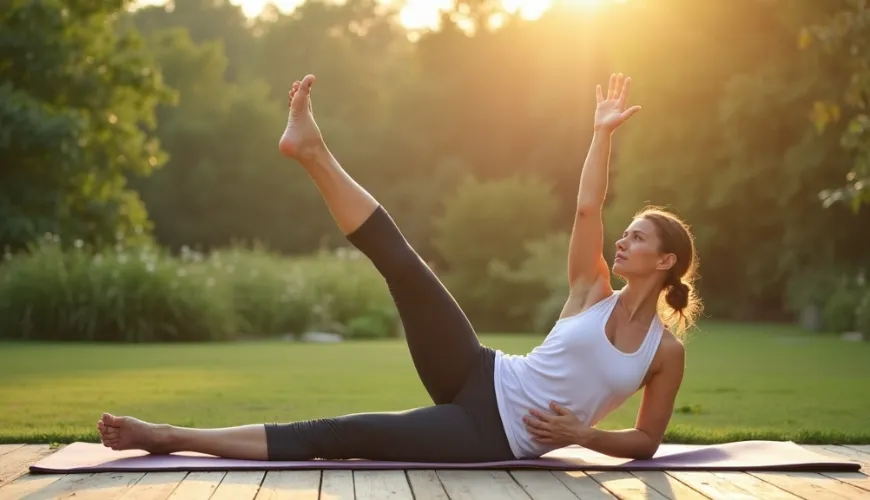
How to Manage Hypermobility and Keep Joints Healthy

Hypermobility - When the Body is Too Flexible
At first glance, it may seem like a gift—the ability to touch the ground with your palms without any difficulty, bend your thumb to your forearm, or comfortably sit in a lotus position without yoga. However, excessive flexibility can hide a condition with its own challenges. Joint hypermobility is not always just an advantage but often a challenge. The sooner we recognize it, the better we can prevent the problems it brings.
What is hypermobility and why is it being talked about more than before?
Hypermobility means that a person's joints have a greater range of motion than usual. For some people, it's congenital and causes no issues—they are often called "double-jointed." For others, it can be associated with pain, fatigue, injuries, or even chronic issues. In such cases, we don't just talk about hypermobility as a trait but rather as hypermobility syndrome.
While hypermobility was often overlooked or considered a mere peculiarity in the past, it now receives more attention. One reason is the growing awareness of its impact on daily life, especially for children and adolescents.
How to recognize if the body is too flexible?
Let's answer a question that many parents and adults ask: Hypermobility—what does it actually mean in practice?
One of the most common indicators is the Beighton score—a simple test that assesses flexibility in several joints. It includes the ability to:
- bend the little finger backward beyond 90 degrees,
- touch the floor with palms with straight legs,
- bend the elbow or knee backward,
- bend the thumb to the forearm.
If a person scores 5 or more out of a possible 9 points, it's likely they have hypermobile joints.
But flexibility alone is not enough. Many people are flexible and still healthy. Hypermobility becomes a problem when symptoms associated with it start to appear. And this is where early recognition becomes important.
Hypermobility in children - when it's not just about being skillful
Children are naturally flexible and have softer connective tissue than adults. For some, this flexibility exceeds normal limits. Hypermobility in children often manifests itself by easily getting injured, having unstable ankles, frequently falling, or complaining of leg or arm pain—especially after physical activity.
For example, eight-year-old Adélka from Brno, who loves gymnastics, started repeatedly suffering from knee and wrist pain. After several visits to the doctor and physiotherapist, it turned out she has significantly hypermobile joints. Her parents initially feared she would have to quit sports. However, thanks to targeted exercises, she began to strengthen her stabilizing muscles, and the pain gradually subsided.
Physiotherapy plays a key role for children with this problem. It helps not only alleviate symptoms but also prevent injuries to which hypermobile children are more prone. Appropriate load is also important—too much inactivity is as harmful as extreme sports performance.
Symptoms that cannot be overlooked
Symptoms of hypermobility can vary depending on age and the extent of the condition. For some people, it manifests as mild pain during greater exertion, while for others, it escalates into chronic issues. Common symptoms include:
- joint pain without any apparent cause,
- repeated dislocations or sprains,
- fatigue, especially after prolonged standing or walking,
- "creaking" or "popping" in the joints,
- problems with balance and coordination,
- posture issues.
In some people, hypermobility is also associated with other difficulties—such as digestive issues, frequent headaches, or even anxiety. This is because hypermobility can be part of a broader spectrum of connective tissue disorders, such as Ehlers-Danlos syndrome. However, it is not always a serious illness—often it's just an individual trait that requires more care and attention.
Research suggests that mild forms of hypermobility occur in up to 10–15% of the population, being more common in women than men. In children, the number might be even higher, as joint laxity usually decreases with age.
How to deal with excessive flexibility?
If hypermobility becomes a problem, finding the right approach is crucial. It is not a disease in the true sense—rather a bodily disposition that can be managed.
The foundation is strengthening the deep stabilizing system, known as the core. The stronger the muscles around the joints, the lower the risk of overloading and injury. Suitable activities include pilates, yoga (in a mild form), exercises on a ball, or under the supervision of a physiotherapist.
Proper footwear and arch support are also important, especially for children—those with hypermobile ankles may tend to have fallen arches, leading to further posture issues.
As for sports? It is by no means necessary to avoid it—on the contrary, movement within limits is recommended. Activities should be chosen that do not excessively strain the joints and keep the body balanced. Swimming, Nordic walking, or dancing can be suitable alternatives.
The psychological aspect also plays a role. People who suffer long-term from pain or fatigue without a clear diagnosis can feel frustrated or like they are "making things up." In such cases, understanding from the surroundings and an informed medical approach are important.
When is it time to see a specialist?
If someone notices that they or their child have significantly mobile joints associated with pain or fatigue, it is advisable to consult a pediatrician, orthopedist, or physiotherapist. They can suggest suitable exercises and, if necessary, recommend further examinations.
In the Czech Republic, the issue of hypermobility is increasingly being addressed by specialized physiotherapists and centers focused on the musculoskeletal system. The good news is that with early intervention and a properly set regimen, most difficulties can be effectively managed.
As physiotherapist Mgr. Jana Tichá from the Prague center for movement therapy says: "People with hypermobility often feel that something is wrong with their body. In reality, they just have different limits—and once they learn to perceive and use their body correctly, they can live a full and active life."
And therein lies the key—not to suppress mobility, but to learn how to handle it. Recognizing hypermobility is not a reason to fear, but an opportunity to better understand your body.

